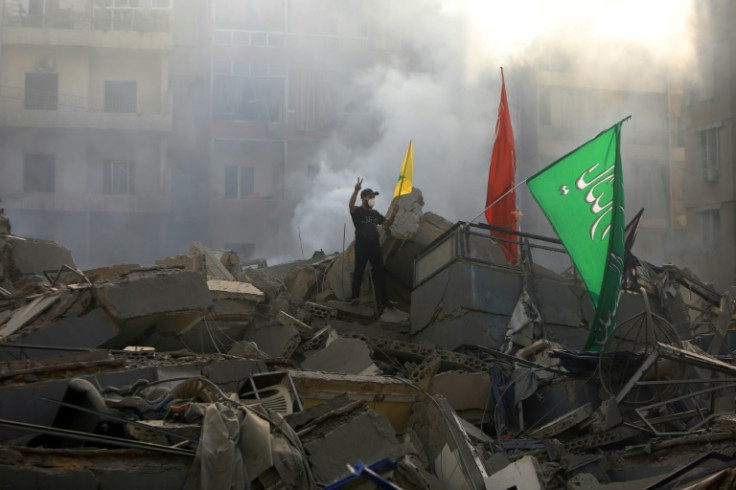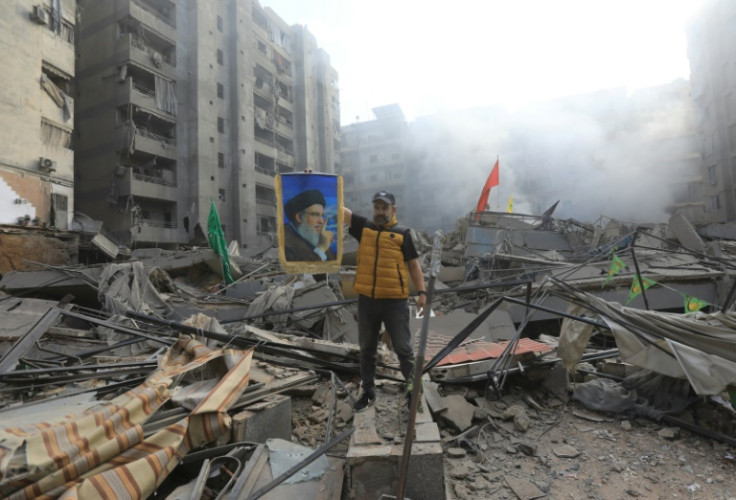
Minutes from the heart of Beirut, the Lebanese capital's once vibrant southern suburbs lie largely deserted save for black-clad Hezbollah militants standing guard amid the rubble.
Huge portraits of the movement's slain leader Hassan Nasrallah and other commanders killed in the blistering air campaign Israel launched in late September flutter in the wind alongside the movement's yellow flag -- in some cases painted red to signal vengeance.
The smell of gunpowder still pervades the area after Israel pounded it with at least 10 air strikes before dawn on Friday.
Hezbollah militants armed with machine guns have cordoned off much of the area.
Thick smoke envelops the Kafaat district from a fire that has yet to be extinguished after the morning's raids.
Nearby, a red fire truck lies on its side next to a pile of charred vehicles, hit by a strike before it could reach the building in flames.
Across the southern suburbs, dozens of buildings have been reduced to rubble and twisted metal.
Posters of Nasrallah are everywhere. "Divine victory is coming," the caption promises his followers.
The area where he was killed in a huge Israeli air strike in late September has been completely cordoned off by Hezbollah fighters. So too has the area where his heir apparent Hashem Safieddine was killed the following week.
Few residents remain in the devastated southern suburbs, once home to up to 800,000 people.
"When the Israeli army gives evacuation orders we flee the house, even in the middle of the night, and wait a few hours in the open air before returning," a young woman told AFP, requesting anonymity for security reasons.
She said she and her family have nowhere else to go.
A mechanic, who also requested anonymity, told AFP he drives in daily from the mountains above Beirut, despite strikes on the highway on Wednesday and Thursday, to open his shop and check on his house.
"We come in the morning to open our shops and we leave in the afternoon before the strikes begin," he said.
Hezbollah militants were everywhere, guarding the group's stronghold turned ghost town.
Pharmacies are still open and fruit and vegetable vendors have set up stalls for the suburbs' remaining residents.
But many shops remain shuttered.
A few residents hastily packed a few belongings before driving off to safer areas.
A crane lifted furniture from the top floor of a building that had partially collapsed.
A man on a scooter took photographs of the devastation to show his family what has become of their street.
Repeated Israeli air strikes since September 23 have caused widespread destruction, even in districts spared in the last Israel-Hezbollah war in 2006.
Breaking the eerie silence, martial music resonated from a rubble-filled street, where Hezbollah was filming a propaganda video.
The Lebanese army has maintained a few checkpoints at the main entrances to the southern suburbs but has abandoned others.
The buzz of Israeli surveillance drones is everywhere, not just in the southern suburbs.









